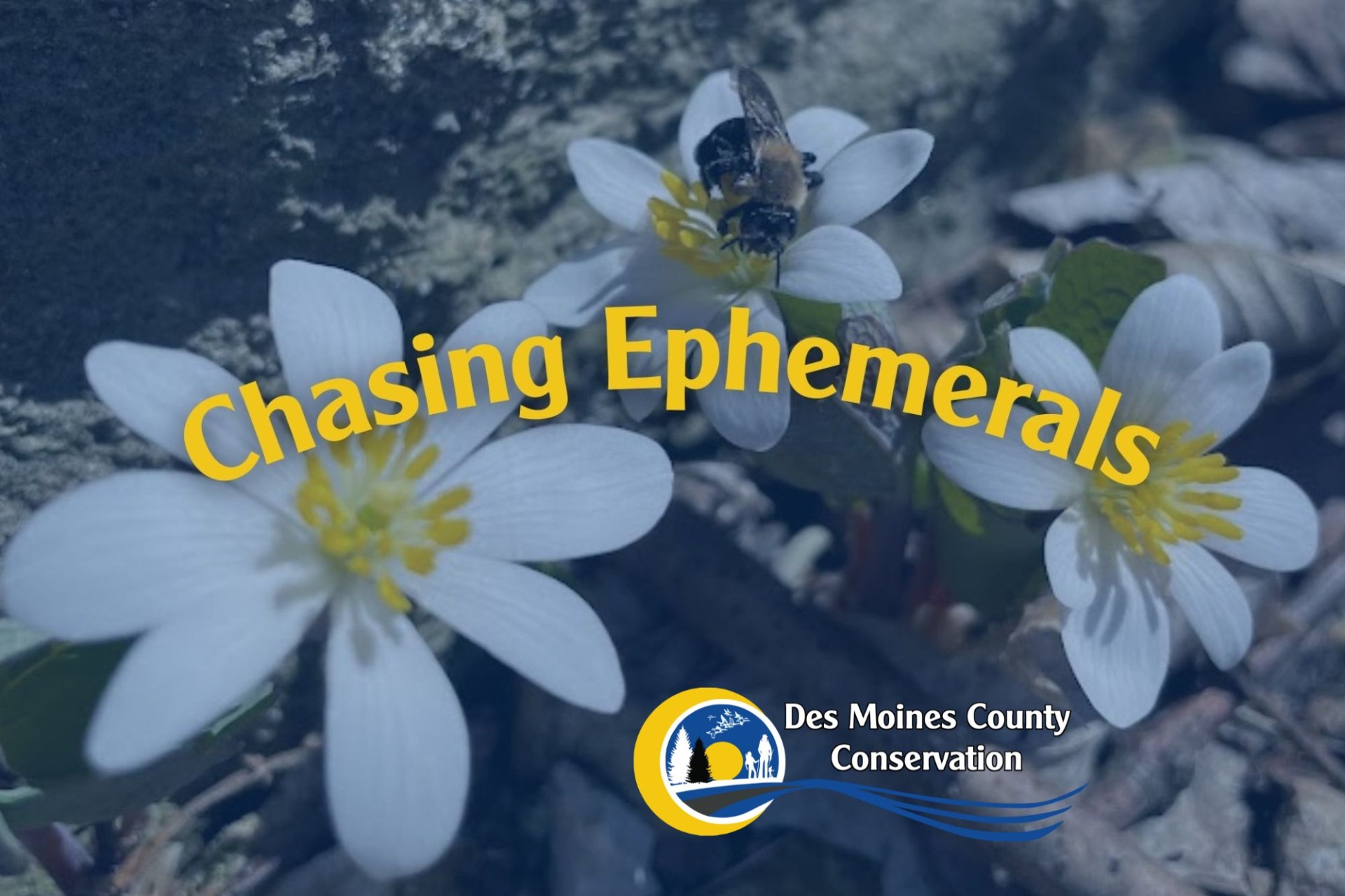
Chasing Ephemerals
Spring is a time of transformation, and nothing captures this better than the emergence of ephemeral wildflowers across the forest floor.Jacklyn Wolken, Conservation Technician
Spring is a time of transformation as nature shakes off the chill of winter and bursts into life. This season brings the emergence of woodland wildflowers, also known as spring ephemerals, which brighten our forests and signal the arrival of spring. The term "ephemeral" refers to something short-lived, which perfectly describes these woodland wildflowers. As spring unfolds, you’ll discover new wildflowers blooming almost weekly, each week revealing different flowers as the previous ones gracefully fade away. April is a prime month to view these delicate plants.
But why do these flowers bloom exclusively in spring? They're in a race against time to bloom, attract pollinators, be pollinated, and produce seeds before the tree canopies fully leaf out and shade them from the sunlight they depend on. This urgency is crucial for their reproduction, ensuring they return year after year.
Among the first woodland wildflowers to bloom in spring, Snow Trillium emerges between March and early April, its delicate white petals often pushing through melting snow—a true sign of the season. Thriving in limestone-rich soils, it can be found in areas like Starr’s Cave. As the season progresses, another early bloomer, Hepatica, a member of the buttercup family, begins to brighten the forest floor with clusters of pink, purple, or white flowers from late March through April. This charming plant is easily recognized by its hairy stems and lobed leaves.
Joining the early spring display, Bloodroot makes a brief but striking appearance in bottomland forests. Its single leaf wraps tightly around the stem, while its white petals only open in sunlight, blooming for just a short time from late March through April. As Bloodroot fades, Dutchman’s Breeches takes center stage, its whimsical, pant-shaped blossoms dangling gracefully from slender stems. These white or pink-tinged flowers contrast beautifully against fern like foliage and bloom throughout April.
By mid-April, Sweet William adds a splash of color to the woodland trails. With its striking blue-purple petals arranged like a propeller, this wildflower can be spotted along trails at Hunt Woods Recreation Area, continuing to bloom through May. Finally, rounding out the spring wildflower display, the May Apple spreads its large, umbrella-like leaves across the forest floor. Beneath the lush foliage, a single white flower hides, later developing into a small, apple-like fruit.
Several parks in Des Moines County provide excellent opportunities to observe these fleeting flowers. Starr’s Cave Park and Preserve, Hunt Woods Recreation Area, Hickory Bend Recreation Area, Big Hollow Recreation Area, and Luckenbill Woods offer serene spaces to appreciate the beauty of spring ephemerals and connect with nature.
A great time to see these wildflowers in bloom is during the Donate Life Run/Walk on Saturday, April 12, at Starr’s Cave Park and Preserve. This special event, held in honor of Donate Life Month, supports the Iowa Donor Network. Participants of all ages and abilities are welcome to join in raising awareness for organ and tissue donation while celebrating life and community. The event kicks off at 9:00 AM with a 1-mile run/walk, followed by a combined 5K and 10K race at 9:30 AM.
As you explore, remember to take only pictures and not to pick the flowers. These plants face numerous challenges, and picking them can hinder their ability to reproduce. Apps like “Seek” and “Picture This” are useful for identifying plants in the wild. You can search for Iowa woodland wildflowers online and discover various resources, including websites and digital field guides, to assist you in your exploration. If you need help identifying a plant, feel free to bring a picture to Starr’s Cave Nature Center, where the staff will be happy to assist you.
Get out to your county parks this spring and search for spring ephemerals!
published Monday, April 7, 2025

